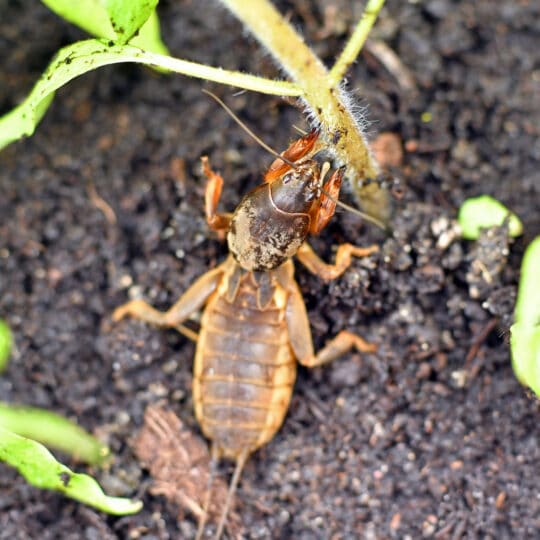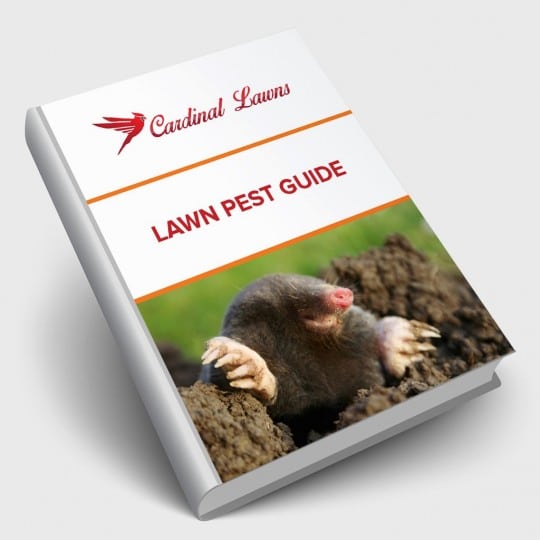Mole Crickets
How to Identify & Control
Posted
August 5, 2021

Separately, a mole and cricket can damage your lawn and garden. So, just think what kind of destruction a mole cricket can do. Understanding this type of insect is a step in the right direction to controlling mole crickets before they wreak havoc in your yard.
Pest Identification
The first step in controlling a pest problem is identifying the type of pest you’re dealing with. There are several types of mole crickets, but they all have a cricket-like appearance: three pairs of legs, three-segmented body parts, and antennae. One of the main differences is their clawed front legs resemble the front legs of a mole to help them dig through the soil. Some species are bigger than others and they range in color from tan to dark brown/black. Since some crickets do more damage to your lawn than others, it’s important to properly identify which types are taking over your lawn.
Mole Cricket Damage
Some mole crickets dine exclusively on your turfgrass roots and shoots, while others enjoy small organisms in the soil and rarely touch the turf. However, these insects tunnel through the soil looking for food, so this act alone can severely damage the grass. Like moles, you may be able to see the mounds mole crickets make, especially in warm weather.
If you’ve had a problem with mole crickets before, and never addressed it, chances are you’ll have a problem again in the same spot. These insects return to their favorite locations year after year. While you may notice some lawn damage in the spring, the real destruction happens as mole crickets mature in the early fall. Adults go to work tunneling and feeding throughout your lawn when the weather is warm and wet. Things may slow down by October as they travel deeper into the soil to spend the winter.
Controlling Mole Crickets
To be successful at managing mole crickets, you need to be patient and persistent. Unfortunately, it’s not as simple as spraying insecticide and praying that works. You need to regularly monitor activity and treat it accordingly. One way to measure activity is to drench the suspected area with soapy water and watch to see how many come to the surface. Map out the area where you need to direct any insecticide application. Not only will this help save healthy plants, but it will be more effective if you can pinpoint where the insects are located.
Plan on applying any insecticide during June and July while mole crickets are still mainly small but still active. Make sure the soil is warm and moist. If it’s too dry, water the area well to encourage the mole crickets to come closer to the surface. Follow up with another treatment in the fall if needed. Whether you choose a cricket bait product or chemical insecticides, make sure you carefully follow all instructions for the best results.
One of the best ways to help prevent any pest infestation is to properly maintain your yard. Test your soil to make sure it has enough nutrients. Mow your lawn at the right height. Irrigate and water your plants appropriately. Contact Cardinal Lawns for more information on how to properly identify lawn pests and ways of controlling mole crickets.

Download Your FREE Lawn Pest Guide
Pests become most prevalent during the heat and humidity of summer. Take some time to learn about the signs of infestations before any damage can be caused to your landscape. This handy guide will teach you how to spot common lawn pests and how to keep them from causing harm to you and your property.